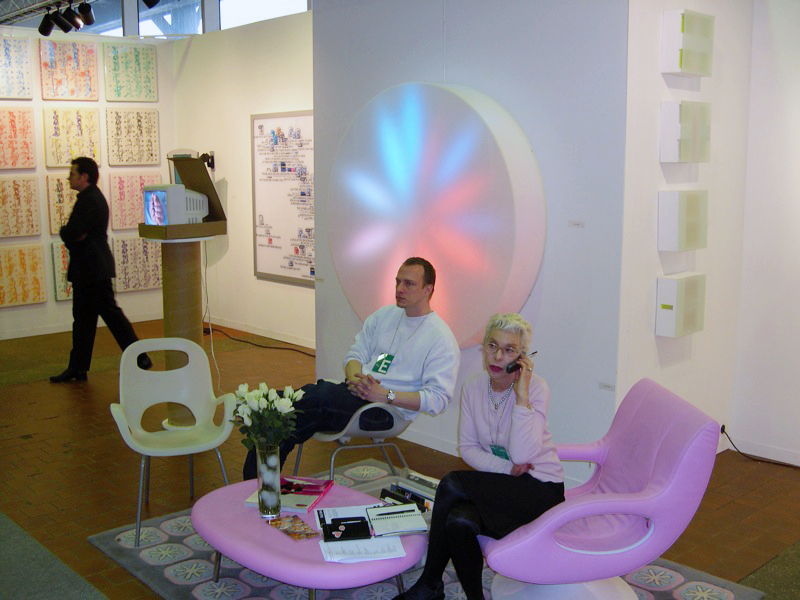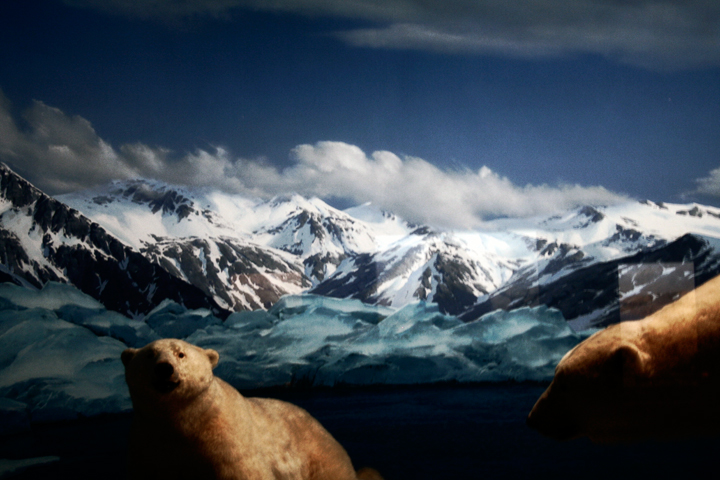PART ONE
“Coal Tipple, WV” (PJM, 1986); photographed on the back porch of the family home by the artist’s father.
1
Home is the main circuit of my art. It has been that way from the get-go. Home is the prime 4D concept, and can transform casually or causally into the art’s medium, the architecture, the studio, content, framing and more. The philosophy for art is shaped by home. Home is potentially the central marketplace for art, and its concrete destination, or at least a station at which the object art pauses its movement, and the idea art is envisioned. The definition of home is extensive and can encompass the metaphysical and the geological meaning, as well as the political, communal or social. Home, since the advent of the personal computer and the ubiquitous wired network device has blurred and morphed to become to variable degree virtual. In its absence or negation, home is the nexus for the modern issue, the focal discourse of value orientation, the core of identity and its lack. The correlation between home and sexuality has never been more profound and complex. All these conditions for home - and there are abundantly more, including excess writ large - swell and diminish in the tides of one’s and the collective attention matrix. The circumstances of unfolding modernity enforce the power of the home to map the significance of people, from birth to death and beyond. Home ultimately is the modulation between permanence and the temporary, material and immaterial, memory and loss. Home is a key to human relations, and this is undeniable, for the nomad or the native.
VIDEO [“Come Home” (Description ca. 2006 from the AFH YouTube channel)] ~ “An installation element for ‘Seven Episodes: A Unifying Dream Interrupts Causality :: The Casualty Animates the Space’” ~ Notes from Artist Statement: "Seven Episodes" is a 4D production, and the fourth in a cycle of exhibits ("A Prayer For Clean Water") presented in installations, lectures and performance in Austin, Texas, at St. Edward's University and Shady Tree Studios, October through December 2005. Information about the Austin project can be found on my website. "Seven Episodes" features new works I've completed since arriving at CGU, as well as purchased, "found", re-contextualized and appropriated objects and elements. "Seven Episodes" also presents creative contributions from DddD collective artists (01 SlewCrew AFH) Seth Strope, Sean Gaulager, Shane Kennedy, Max Abrams, Adam Cotton and model.
Armory Show booth 2001 (PJM)
2
In a few days, in early December, the “art world” converges on Miami for the fairs. The art fairs of the past several decades have substantially reformatted most art markets, but especially the fine art, contemporary, global, high net worth marketplace. The change in prime venue for art has coincided with other important trends - political, economic, cultural and especially technological. Not surprisingly, the type of art and artist that generates market success, and the support that success attaches, has evolved. The globalist shift for art since the second World War means that a manufactured Chinese art market parallels a Western art market that is rigged for ROI for its majority players in an undefined or -regulated scenario. The stakes for the institutions, businesses and individuals who dominate the main channels for art exchange have never been higher, as indicated by valuations. Yet, the narrative of booming commerce for international art is accompanied by the subtext of collapsing cultural infrastructure, precarity for the vast majority of the art-centric demographic, a diminishing art public and increasing resistance to the altering status quo. The most resonant protestation echoing through the art halls is the cry against inequality. The sustained noise in the distance is the rising fear of cataclysmic war and climate-caused catastrophe.
Still #33 from BONE series; manipulated digital photograph of LA Natural History Museum vitrine (PJM 2005, for Gramatica Parda at ANDlab, Los Angeles)
The phenomena outlined above have Home in common, although the dynamics of the domestic are inconsistent from thing to thing, point to point, image to image, person to person, place to place, and so on. If you ask someone, Where (or What) is your Home? - what is the answer, beyond a street address? What are real home economics, right now? In America, is Homeland Security a settled matter? If an energy company decides to construct a pipeline through your home, what recourse will you, your family and your community have, if you say no? Command and control for privacy and property is not a clarified hierarchy today, if ever it has been, at least not for everyone, even a conceptual Everyone. Whether the access to and freedom within your domestic space is enforced or undone by the government, a syndicate of corporations or yourself is an open question, we have discovered, and not through a free press, generally speaking, or not initially anyway. How safe are you in your residence? Does your notion of Home extend beyond the walls of the structure you inhabit (possibly a box, a tent or a car) to a yard, into the village, town, city, state, region, country, continent, planet you inhabit? Is your supposition of home contingent on race, family structure, religion, socialization, politics, economic class and whatever additional or other associative order pertains to you, beyond location, location, location? If home is a place, what else is it? How much of the rest of home does any of us get to choose or reject? Or will it be defined for us, through systematic superimposition?
Enamel on metal, hand-painted sign (PJM, 1998)
3
The first independent gallery project I launched was Freedom Gallery in my home town of Beckley, West Virginia in 1998. We survived a few months. The rent was minimal. The attendance for events and the foot traffic was a function of extended family connections, high school friendships, word of mouth, little blurbs in the local paper, flyers, a sign, pretty much what one would expect. I still have the hand-painted sign. My ideas about art and community are profoundly affected by the experiences that have accumulated over the decades at the cross-section of my Appalachian roots and my leaving and returning there, in no small measure due to my thinking about the place when I am absent. Collective and collaborative exhibitions like HOME01 and SEAM01 emerged directly from the connection to my mountain state home, even if the actual expositions incorporated a much broader conception of home and memory of home, since the source material came from a pool of artists’ contributions. “Where My Feet Stick to the Ground” and the other Scotland-focused shows, artworks and projects I’ve produced have their point of origin in my ancestry, which is to say, the home my ancestors left when they came to America. The ancestral home is a configuration that binds blood and bone to place with a history that is a task to maintain, much less recover, if it has been interrupted through generations, by trauma, displacement or other pressures. My first solo exhibit at Eidolon Gallery in Santa Fe, which happened roughly a decade after I completed undergraduate study, took on the divorce industry. In short, that show dealt explicitly with the wrenching effects of home dissolution, and the predatory apparatus contrived to consume those whose domestic life has failed.
McLean residence, circa 2008
I think there is a subtle logic that operates in my work, which has to do with the precept that a church is God’s house. Given my religious upbringing, it was inevitable. Frank Stella and others have poignantly written about the architecture of Western painting, about the centuries that painting served the Crowns of Europe and decorated the earthbound portals to the divine. Michelangelo’s Sistine Chapel was an important reference for my early work, but so was the reactionary, visionary production of van Gogh. Add to the mix the window/grids of the comics, the book illustrations that constituted my visual education in graphic imagination and the strange haloed projections of movies and light-emissions of television, and the platform for interpreting the sensations of my generation clarify. In essence, this combination of multimedia is the precursor of the Internet. Mine was the last cohort to experience the universe before it was compressed for mass dissemination through near total monopoly channels, and to witness the transfiguration of all language-based exchange into data packages. I chose in the early 90s to immerse myself in digital processes and media on a more or less equivalent basis with my artist practice.
Swimmer (PJM, 2003)
Launching the Art for Humans web platform was less a launch and more an incremental build. One inspiration I had for the network structure was the typical New Mexico barrio compound/home. The adobe haciendas that the nortenos constructed were additive, as in add a baby, add a room or a wing. The family expanded dimensionally. AFH grew along the same rhizomatic lines. Daily activity did involve filling pre-existing structures with content; translating analog data to digital formats and archiving them transparently. The long-term aggregate effect seemed to align gracefully with modular design aesthetics. Reflecting on the AFH program, now in its third decade, I marvel at our naivete, and work ethic. If you think of program components as building blocks or links, it’s easy with hindsight to see how dependence on anything that could be consumed by what would become the powerhouses in the field was a weak org-design element. Autonomy over time is terribly important for technical reasons, but it is a key determinant in how one survives.
Spash page for AFH Gallery Online, circa 2005.
The virtual AFH, during healthy phases, was nicely harmonized with actual AFH. The promise of the web in the late 90s and into the mid-00s is hard to remedy with the shitty version that exists now. A home page in that brief period could be as sexy as a custom paint job in California car culture Classic era. A web site could be a smack in the chops or an epic adventure. The best ones were a bit of both. It was possible to spend the same time and energy constructing a net-based production as one might invest building a brick and mortar home or facility and/or undertaking a commercial venture or starting a family. What many of us failed to understand was the fragility of the medium. A prime characteristic of the virtual thing is its likelihood of disappearance. While this characteristic applies to the actual thing, too, the time frame is very different. Virtual and actual decay or decomposition both stink, if it’s your entity that’s dissolving. A virtual crash can be like a light switch turned off.
“Where My Feet Stick to the Ground” installation view [Peanut Gallery, Nashville, TN (1996)]
The Home Show in Astoria is a natural crescendo in the arc of this thread in my art. It allocates the proper distance to the subject, and the duration makes sense. As a concrete exposition, the display of vinyl paintings is coherent enough to establish conformity within the building. The art and architecture seem fitted, not contrived. The exhibition meshes with contemporary art protocols for emotional neutrality in the white cube. In its first stage, Home Show reintroduces moving image and web-based elements, affording the paintings their moment to project into the environment without media interference and distraction. In future iterations, there very well may be media assets and 3D objects that interact within a presentation environment for 4D VyNIL. For now, however, that is only an idea in an imaginary, formative incarnation.
JP’s backyard, 2009 (PJM)








![“Where My Feet Stick to the Ground” installation view [Peanut Gallery, Nashville, TN (1996)]](https://images.squarespace-cdn.com/content/v1/501abbd4c4aaab20160f16af/1543546761017-36SLRNPJE28GAEKTTELB/wmfsttg.jpg)
